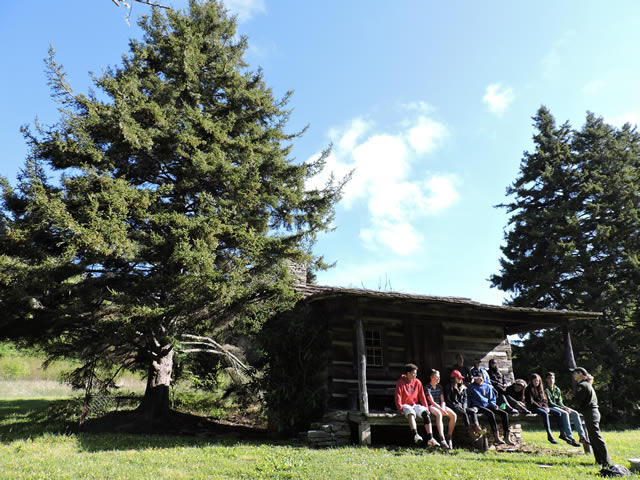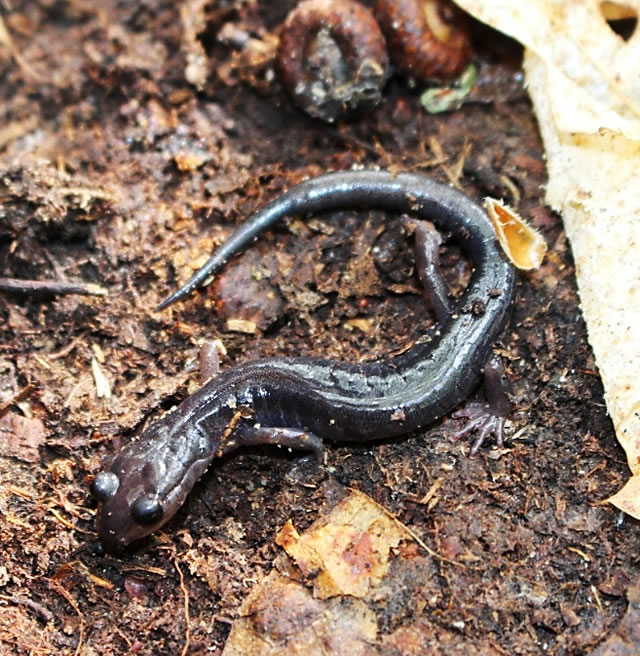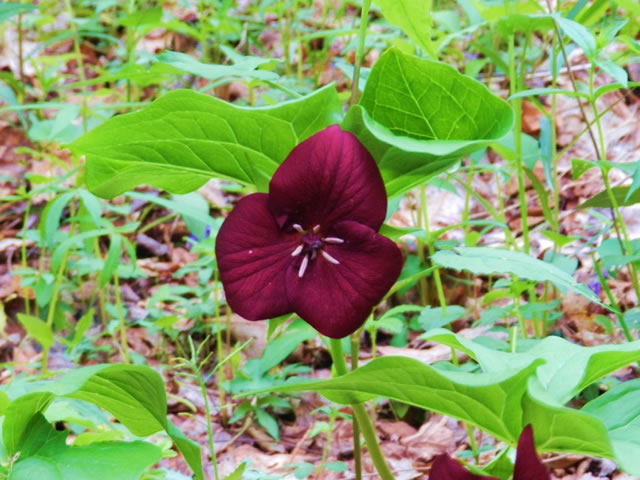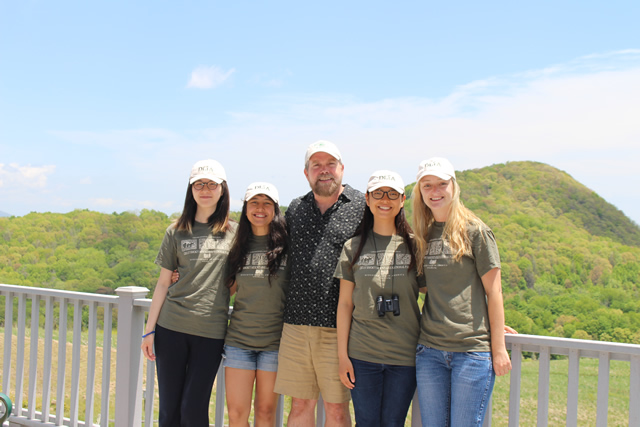

We are graduate students from the Nicholas School of the Environment at Duke University working this summer as E.O. Wilson Biodiversity Foundation interns, as part of the ATBI/BioBlitz SWAT Team and Group Masters Project. Our work is supported by a partnership with Discover Life in America, Rocky Mountain National Park, and the Turner Endangered Species Fund. This summer we will be identifying gaps in the current species database at Rocky Mountain National Park. From our experiences we ultimately hope to develop a story that inspires action to preserve biodiversity in our national parks and natural spaces.
TRAINING IN SMOKY MOUNTAIN NATIONAL PARK CONTINUED
Monday: Wildlife wonders and education for the future
Encountering wildlife is a thrilling experience; overtime, these experiences nurture the future stewards of the natural world and its living beings. After a peaceful night and glorious sunrise, we were anxious to explore the most biologically diverse zone in temperate North America with groups of local high school students in the Great Smoky Mountains National Park. The educational crew from the Appalachian Highlands Science Learning Center, Susan and Carlin, led two fantastic and enlightening field trips on a salamander census, water quality monitoring, and a phenology survey to help us learn to appreciate the delicate and intricate connections and interactions between wildlife and their environment.


Tuesday: Our trip to Gatlinburg
On Tuesday we left our secluded paradise and drove to the nearest town, Gatlinburg. The park headquarters are located up the mountainside, in Tennessee. This gave us an opportunity to drive through the Blue Ridge Parkway, a road that lived up to its reputation as one of the most beautiful drives in the nation. We met up with Todd and he showed us the ropes.
Wednesday: Exploring Purchase Knob
After an exciting day at Gatlinburg on Tuesday, we were ready to explore Purchase Knob and learn more about how the Great Smoky Mountains National Park was managed. Paul Super, a biologist and the research coordinator for the park, gave us a very thorough summary of management in the park and the challenges they face in conserving its resources.


Thursday: Connecting dots and looking ahead
Although we can never get enough of immersing ourselves in nature and exploring its wonder, as today is the last training day, it’s time for us to sit around the table and wrap things up.


We looked back at the intention for our training in the Great Smokies—to learn how the Great Smoky Mountains applied ATBI and what they have achieved with ATBI since 1999. Now, after observing routines of park service, outcomes of species inventory and approaches of resource management, we have learned how to focus our project and time in the Rocky Mountain National Park (RMNP).
Three research questions are important for our work in RMNP:
• Which taxa or species are of higher priority at Rocky Mountain National Park and why?
• What are the scientific implications of our project for decision makers?
• What educational information can we gather from our project to educate the public about the significance of biodiversity?
We will close our blog post this week with a metaphor that both Todd and Paul have used to illustrate the relationship between ATBI and national park: All the wildlife and natural environment inside the national park are like gifts packed in a black box for us—so mysterious since we know little about them and yet so precious that we have the responsibility to protect them. ATBI is just such a key to opening this box, so that we can understand exactly what are inside and why they are precious. Only then can we properly protect and fully appreciate this treasure that our mother nature entrusts to us.


Next Stop: Rocky Mountain National Park!
—Sahil Chaini, Zhenzhen Chen, Casey Johnson, and Jianyu Wu

